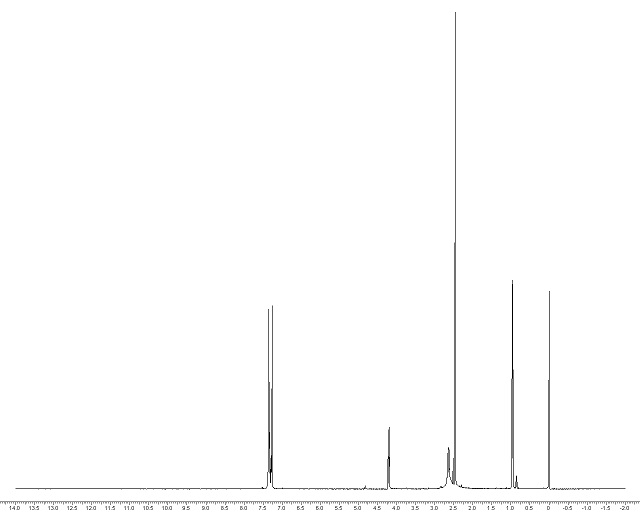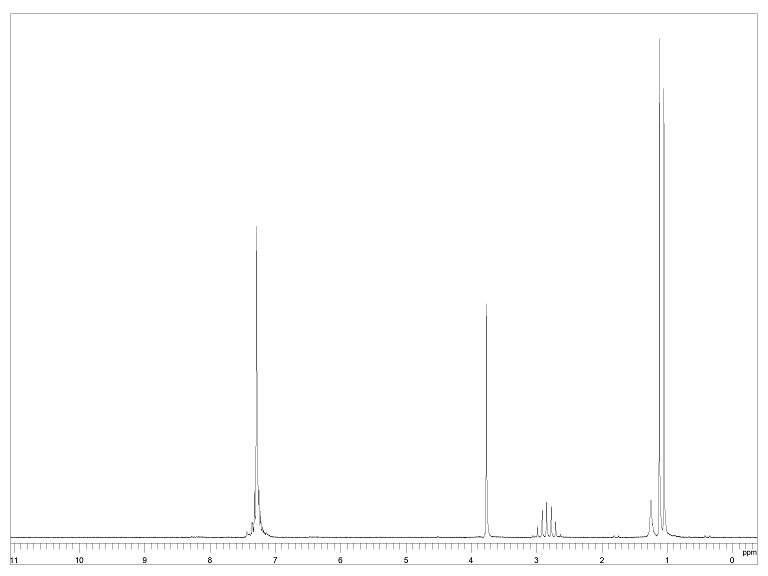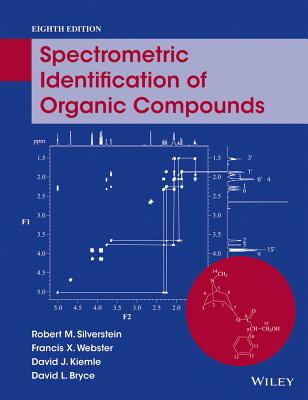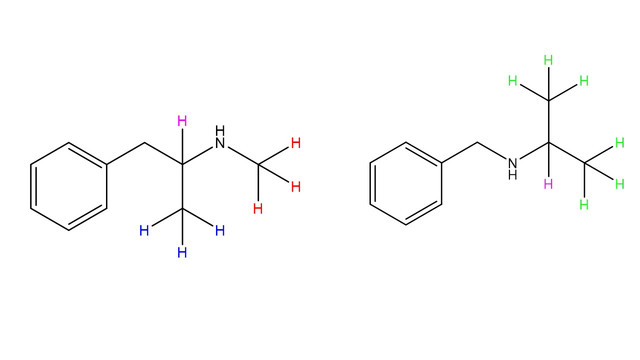Jabberwocky
Frumious Bandersnatch
There are many people on this forum far more expert then me about what follows. I look forward to their comments and corrections if I’ve got any of this wrong.
Isopropylbenzylamine (n-iso) is a chain isomer of methamphetamine. It is known in the scientific literature under numerous other names. In their salt (HCL) forms, the two substances appear similar in terms of crystalline structure and melting point although shard density and opacity are sometimes (erroneously) claimed to be a means to differentiate them. It is claimed that reagent tests cannot differentiate the two substances. The substance has achieved near mythical status amongst methamphetamine users who blame either claim it has no psychoactive effects or induces negative physical sided effects such as nausea and headache and a general feeling of being “sketched out”. It is very widely advertised for sale by international RC and other chemical suppliers - suggesting there is a significant illicit market for it. It is also claimed by some Chinese researchers that n-iso gives a false positive for meth on the standard colloidal gold urine test.
An extensive search of the internet using multiple names for n-iso reveals only a very small number of primary sources conclusively proving methamphetamine and n-so being found together. I would guess less than a dozen mentions. However, there is an observable discourse about methamphetamine and n-iso that takes it for granted that n-iso is a not uncommon adulterant in meth supply. This speculative discourse is evident even in reports at the level of The UN office on Drugs and Crime. Primary sources include significant amounts of pure n-iso being used to bulk out methamphetamine shipments (US), large amounts of n-iso being imported by known methamphetamine distributors (Aus), and a small number of methamphetamine seizures (approx 8 from 6,000 tests) testing positive for n-iso contamination (Aus). Proponents of the n-iso theory argue that this is because n-iso is so similar to meth that the two substances are so similar they cannot be differentiated by drug testing technology.
A recent Chinese article (https://www.hindawi.com/journals/jnm/2021/6679515/) has added to the discourse because it strongly implies that Gas Chromatography/Mass Spectrometry (GC/MS) is not capable of effectively differentiating the two substances. It also implies that GC/MS is the only viable method to differentiate the two substances. It then proposes a new GC/MS technique that better differentiates the two and tests it on 8 samples seized by Chinese police. However the literature and some online chemical databases suggest their claims may be exaggerated. Differences between spectra results for both substances can be seen on PubChem
Observable Differences Between Meth and N-ISO
While the NMRI spectra are clearly different NMRI is not commonly used in drug testing
N-ISO NMRI Spectra (on Varian CFT-20 instrument)
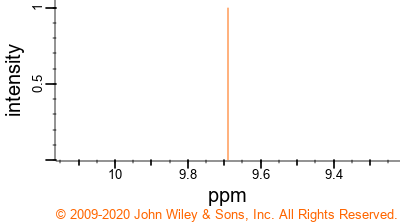
Meth NMRI Spectra (Varian)
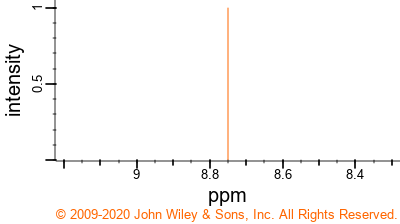
On the other hand, the IR spectra shows clearly different results.
N-ISO AT-IR Spectra
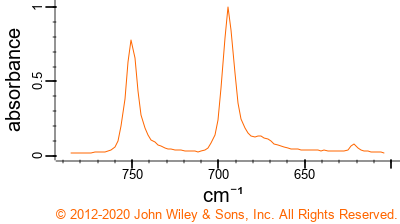
Meth AT-IR Spectra
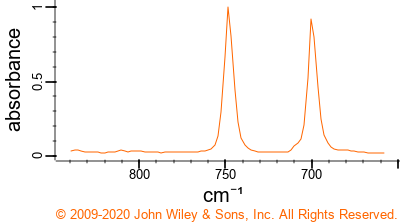
Finally, the Raman spectra are also distinct
N-ISO Raman Spectra
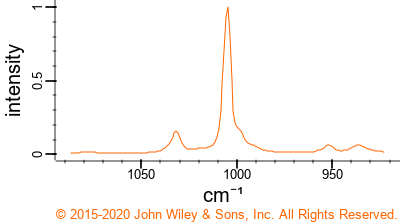
Meth Raman Spectra
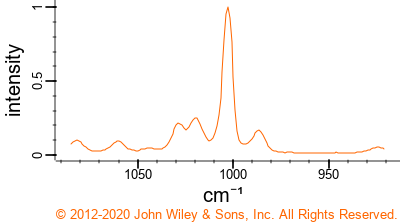
Why Is This Significant?
There are a range of ways of testing drugs and different organisations and agencies use techniques from the cheapest one-shot reagent test up to GC/MS machines costing a million dollars or more. In many jurisdictions GC/MS is mandated as the only legally admissible evidence in drug cases. In some jurisdictions GC/MS and isotope analysis is used regularly because it provides intelligence on what precursors were used and the geographical location of production techniques and the specific of those production techniques themselves. So this level of testing is happening around the world. The FBI and the Australian Federal Police maintain programs to do it purely for high level intelligence gathering.
But this level of testing is also becoming cheaper and portable and available to harm reduction organisations either on their own or in partnership with commercial private-sector labs.
A mass spectrometer can be obtained from $5,000 up though it requires a lot of consumables and an expert operator and is not practical for an HR clinic. However many services are available that do use it. Wedinos for example uses both NMRI and GC/MS to analyse samples and could therefore presumedly differentiate meth and n-ISO. They have accepted one sample claimed to be n-iso, but upon testing it proved to be meth. They also regularly use NMRI to detect analogues of different drugs in mixture.
An IR spectrometer can be obtained for about $5,000 and is common in pharmaceutical labs. It is capable of differentiating isomers. In Australia the harm reduction organisation Pill Testing Australia offers a IR drug testing service. Although they emphasise pills they state that “if you can consume it, we can test it” and will test powders and shards. However they are set up for testing at festivals and don’t seem to have a walk-in or mail-in service. IR treating is non-destructive so technically you can consume your drugs if they test ok.
Raman spectrometry is relatively cheap and highly accurate. It will identify an aqueous solution of only 1% meth in a plastic bag. Like IR spectrometry none of the field test results I looked at ever gave a false positive, unlike reagent testing which give false positives frequently. However it is known that some US police agencies use Ramen spectrometers (Kentucky was one discussed in the literature). However, field testing showed that lower end machines such as those used by police are unable to generate a result on substances that exhibit a high degree of fluorescence. However higher end machines were shown to be able to clearly differentiate between synthetic cathiones based on regioisomer positions on the phenyl ring. Raman testing is also non destructive. There is one study that empirically demonstrates the feasibility of IR spectrometry to differentiate meth and n-ISO (https://onlinelibrary-wiley-com.ezp...au/doi/full/10.1111/j.1556-4029.2010.01336.x#). However the study indicates the ability to do so is dependent on the relative proportions/concentrations of meth and n-iso in the sample. However this study used a low power IR spectrometer, and other studies show that higher power machines are far more discriminatory.
Bottom Line
There are numerous theoretical and empirically validated testing mechanisms available to both law enforcement and the general public that are able to differentiate between methamphetamine and n-isopropylbenzylamine. It may be possible that such testing has been conducted and the negative presence of n-iso has simply not been reported (negative results that do not prove a hypothesis are commonly not written up for scientific journals). Given the online noise around n-iso once would expect we’d pretty soon hear about a positive result. More likely though is the possibility that no-one has bothered to use the above mentioned technologies to field test suspected contaminated meth.
I encourage those people who believe in the n-iso phenomenon to contact publicly accessible drug testing agencies and enquire whether they employ these technologies and whether their equipment is sufficiently sensitive to differentiate the two substances. This may not be a productive avenue because not all testing machines are created equal and not all agencies would want to do a custom test outside their normal protocols. However, even making the enquiry would be an improvement on the unsubstantiated assertions n-iso is in every second bag of meth out there.
Isopropylbenzylamine (n-iso) is a chain isomer of methamphetamine. It is known in the scientific literature under numerous other names. In their salt (HCL) forms, the two substances appear similar in terms of crystalline structure and melting point although shard density and opacity are sometimes (erroneously) claimed to be a means to differentiate them. It is claimed that reagent tests cannot differentiate the two substances. The substance has achieved near mythical status amongst methamphetamine users who blame either claim it has no psychoactive effects or induces negative physical sided effects such as nausea and headache and a general feeling of being “sketched out”. It is very widely advertised for sale by international RC and other chemical suppliers - suggesting there is a significant illicit market for it. It is also claimed by some Chinese researchers that n-iso gives a false positive for meth on the standard colloidal gold urine test.
An extensive search of the internet using multiple names for n-iso reveals only a very small number of primary sources conclusively proving methamphetamine and n-so being found together. I would guess less than a dozen mentions. However, there is an observable discourse about methamphetamine and n-iso that takes it for granted that n-iso is a not uncommon adulterant in meth supply. This speculative discourse is evident even in reports at the level of The UN office on Drugs and Crime. Primary sources include significant amounts of pure n-iso being used to bulk out methamphetamine shipments (US), large amounts of n-iso being imported by known methamphetamine distributors (Aus), and a small number of methamphetamine seizures (approx 8 from 6,000 tests) testing positive for n-iso contamination (Aus). Proponents of the n-iso theory argue that this is because n-iso is so similar to meth that the two substances are so similar they cannot be differentiated by drug testing technology.
A recent Chinese article (https://www.hindawi.com/journals/jnm/2021/6679515/) has added to the discourse because it strongly implies that Gas Chromatography/Mass Spectrometry (GC/MS) is not capable of effectively differentiating the two substances. It also implies that GC/MS is the only viable method to differentiate the two substances. It then proposes a new GC/MS technique that better differentiates the two and tests it on 8 samples seized by Chinese police. However the literature and some online chemical databases suggest their claims may be exaggerated. Differences between spectra results for both substances can be seen on PubChem
Observable Differences Between Meth and N-ISO
While the NMRI spectra are clearly different NMRI is not commonly used in drug testing
N-ISO NMRI Spectra (on Varian CFT-20 instrument)

Meth NMRI Spectra (Varian)

On the other hand, the IR spectra shows clearly different results.
N-ISO AT-IR Spectra

Meth AT-IR Spectra

Finally, the Raman spectra are also distinct
N-ISO Raman Spectra

Meth Raman Spectra

Why Is This Significant?
There are a range of ways of testing drugs and different organisations and agencies use techniques from the cheapest one-shot reagent test up to GC/MS machines costing a million dollars or more. In many jurisdictions GC/MS is mandated as the only legally admissible evidence in drug cases. In some jurisdictions GC/MS and isotope analysis is used regularly because it provides intelligence on what precursors were used and the geographical location of production techniques and the specific of those production techniques themselves. So this level of testing is happening around the world. The FBI and the Australian Federal Police maintain programs to do it purely for high level intelligence gathering.
But this level of testing is also becoming cheaper and portable and available to harm reduction organisations either on their own or in partnership with commercial private-sector labs.
A mass spectrometer can be obtained from $5,000 up though it requires a lot of consumables and an expert operator and is not practical for an HR clinic. However many services are available that do use it. Wedinos for example uses both NMRI and GC/MS to analyse samples and could therefore presumedly differentiate meth and n-ISO. They have accepted one sample claimed to be n-iso, but upon testing it proved to be meth. They also regularly use NMRI to detect analogues of different drugs in mixture.
An IR spectrometer can be obtained for about $5,000 and is common in pharmaceutical labs. It is capable of differentiating isomers. In Australia the harm reduction organisation Pill Testing Australia offers a IR drug testing service. Although they emphasise pills they state that “if you can consume it, we can test it” and will test powders and shards. However they are set up for testing at festivals and don’t seem to have a walk-in or mail-in service. IR treating is non-destructive so technically you can consume your drugs if they test ok.
Raman spectrometry is relatively cheap and highly accurate. It will identify an aqueous solution of only 1% meth in a plastic bag. Like IR spectrometry none of the field test results I looked at ever gave a false positive, unlike reagent testing which give false positives frequently. However it is known that some US police agencies use Ramen spectrometers (Kentucky was one discussed in the literature). However, field testing showed that lower end machines such as those used by police are unable to generate a result on substances that exhibit a high degree of fluorescence. However higher end machines were shown to be able to clearly differentiate between synthetic cathiones based on regioisomer positions on the phenyl ring. Raman testing is also non destructive. There is one study that empirically demonstrates the feasibility of IR spectrometry to differentiate meth and n-ISO (https://onlinelibrary-wiley-com.ezp...au/doi/full/10.1111/j.1556-4029.2010.01336.x#). However the study indicates the ability to do so is dependent on the relative proportions/concentrations of meth and n-iso in the sample. However this study used a low power IR spectrometer, and other studies show that higher power machines are far more discriminatory.
Bottom Line
There are numerous theoretical and empirically validated testing mechanisms available to both law enforcement and the general public that are able to differentiate between methamphetamine and n-isopropylbenzylamine. It may be possible that such testing has been conducted and the negative presence of n-iso has simply not been reported (negative results that do not prove a hypothesis are commonly not written up for scientific journals). Given the online noise around n-iso once would expect we’d pretty soon hear about a positive result. More likely though is the possibility that no-one has bothered to use the above mentioned technologies to field test suspected contaminated meth.
I encourage those people who believe in the n-iso phenomenon to contact publicly accessible drug testing agencies and enquire whether they employ these technologies and whether their equipment is sufficiently sensitive to differentiate the two substances. This may not be a productive avenue because not all testing machines are created equal and not all agencies would want to do a custom test outside their normal protocols. However, even making the enquiry would be an improvement on the unsubstantiated assertions n-iso is in every second bag of meth out there.




